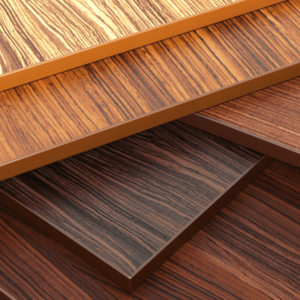Description
Plywood – Douglas Fir Plywood Exterior Grade Ply 2440 x 1220mm
The composite building material known as fir plywood is commonly made in sheets. The name plywood comes from the fact that it is made of thin wood layers, often known as veneers or plies. A fir tree must account for at least a percentage of the plies for plywood to be categorized as fir. As a result, fir centers, or cores, are frequently found in plywoods that are covered with birch or another wood but are nevertheless referred to as fir plywood. A plywood sheet’s total strength is increased by adhering the veneers together and positioning them so that each sheet’s wood grain is at a right angle to the sheet next to it.
The fir tree is a kind of evergreen conifer, which means that it has needles rather than leaves and remains green all year. It belongs to the scientific family Pinaceae. Firs come in between 48 and 55 different species, including the Balsam Fir (Abies balsamea) and the Fraser Fir (Abies braseri). Despite having a similar appearance and being well-known, the Douglas fir is not a species of fir because it is a member of the Pseudotsuga genus.
Fir plywood is not thought to be suitable for use in conventional construction on its own. As a result, it is frequently used in conjunction with other types of wood to produce plywood that is both rigid and strong. Additionally, because fir lacks any insect or disease resistance once it has been hewed, it is primarily intended for indoor use. When building a house, fir plywood is frequently used for sheathing and interior use.
Since fir plywood typically consists of a combination of different types of wood, it is regarded as engineered wood. Typically, the result of this combination is a stronger final product. A batch of plywood is often graded based on how many knots, splits, and other flaws are present in the final product. A plywood sheet can have various grades on either side, with A being the best and D being the worst.
The term 3/4 AC refers to a standard thickness and grade of plywood that has one side of excellent quality and the other of mid- to low quality. It is three-quarters of an inch (or roughly 19 mm) thick. Sometimes the letter X will come after plywood with a grade of D. This typically indicates that it is intended to be glued on and is for use on the exterior of a building or dwelling.
Fir plywood, a specialized variety of fir plywood used in the building of boats, is one example. This type is of greater grade than that used in residences and is coated with a resin. However, marine fir plywood frequently experiences the issue of checking, which happens when tiny, hair-line fissures or lines emerge in the wood as a result of exposure to the elements and the wood’s normal expansion and contraction. Because of this, alternative woods, such Meranti or Okume, are frequently chosen over fir when making boats.
<< Click Here To Contact Factory >>

Fir Plywood Features
- Has a huge variety of sizes and grades
- Enduring and appealing
- Resistant to rot and dampness
- Useful for applications both indoors and outside

Application
- Docks for manufacturing boats
- Fish pens
- Housing boats
- Ccabinets for garage and carport shelving
- Underlayment for a counter
- Bed frame platforms and cabinets
- Applications for overlay
- Outside banners
Environmental
Due to their well-known quick growth, fir trees are a regenerative resource for the manufacture of plywood. The ability to quickly sprout new trees to replace those that have been cut down reduces the environmental impact and guarantees a steady supply of fir wood.










